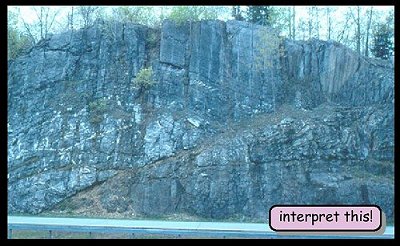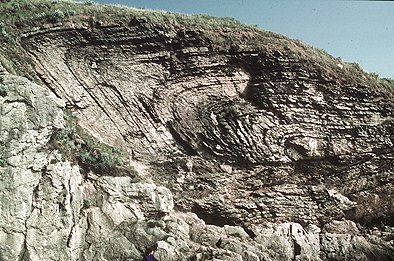![]()
Classical fault-bend folds produce very simple structures where the bed dips simply reflect the angle of the ramps through the stratigraphy. If beds were horizontal before thrusting then ramp angles are commonly less than 30 degrees to bedding. Consequently fault bend folds should be open antiforms. Furthermore, the footwall should remain undeformed.
 An
example of this classical behaviour is here - from this road section in the
appalachians of New York State. However, in many situations the relationship
between bedding and thrusts is not explained by the classical fault bend model.
An
example of this classical behaviour is here - from this road section in the
appalachians of New York State. However, in many situations the relationship
between bedding and thrusts is not explained by the classical fault bend model.
 In
this second example, from Hope's Nose, Devon, the bedding in the hangingwall
defines a tight fold with over-steepened bedding cut-offs. Clearly there is
another process going on here.
In
this second example, from Hope's Nose, Devon, the bedding in the hangingwall
defines a tight fold with over-steepened bedding cut-offs. Clearly there is
another process going on here.
Click here to see how these types of fold-thrust relationships might be explained.